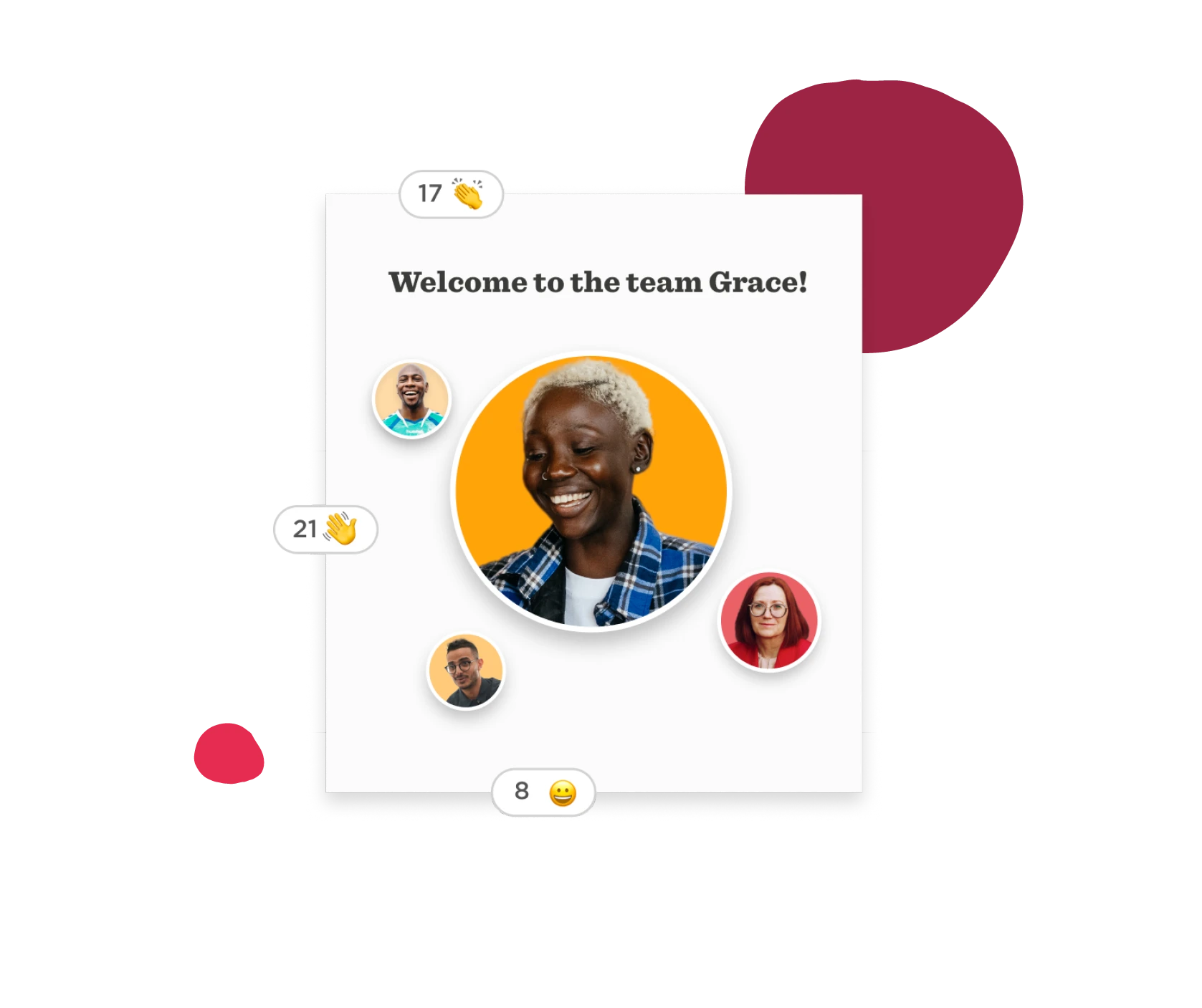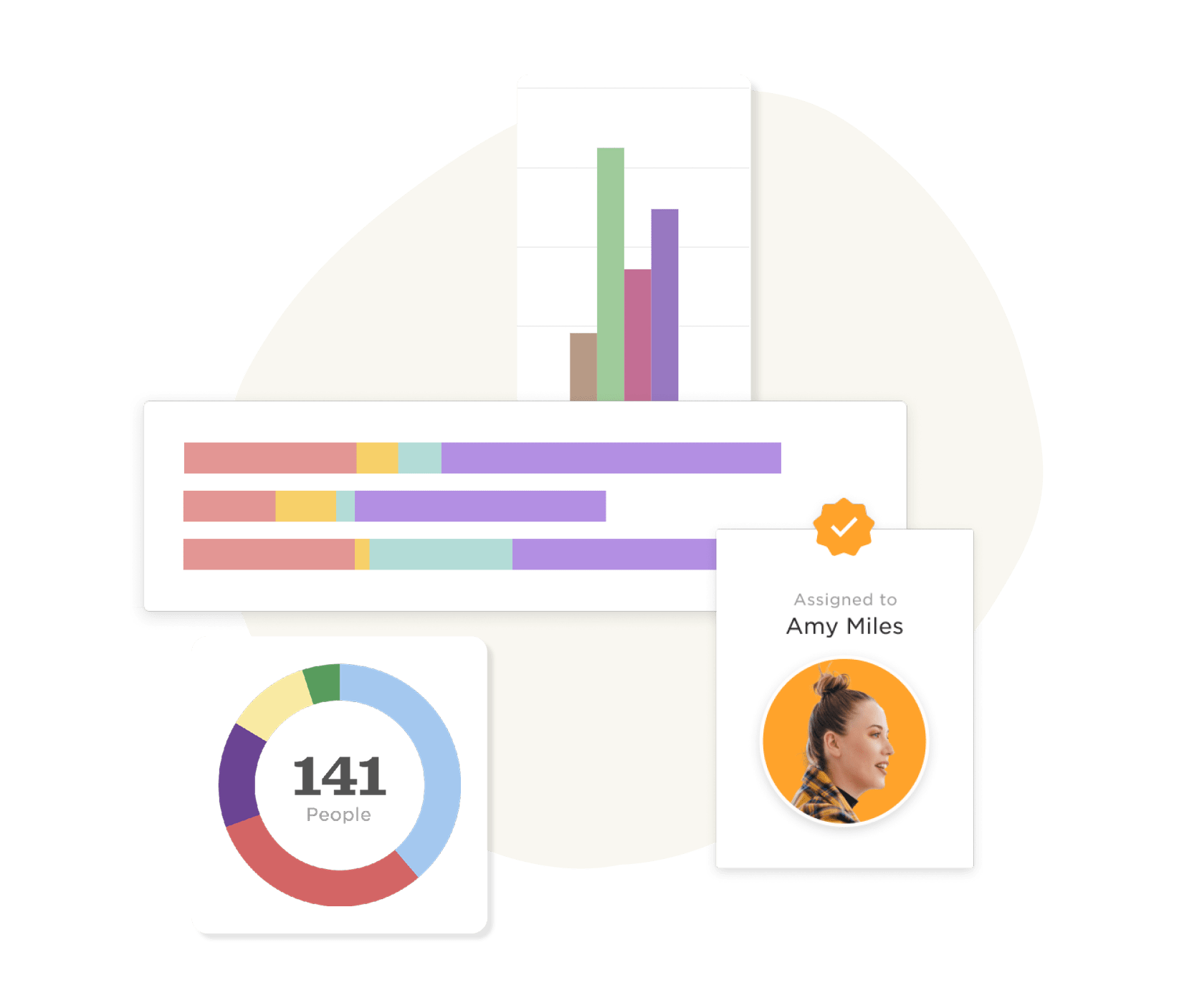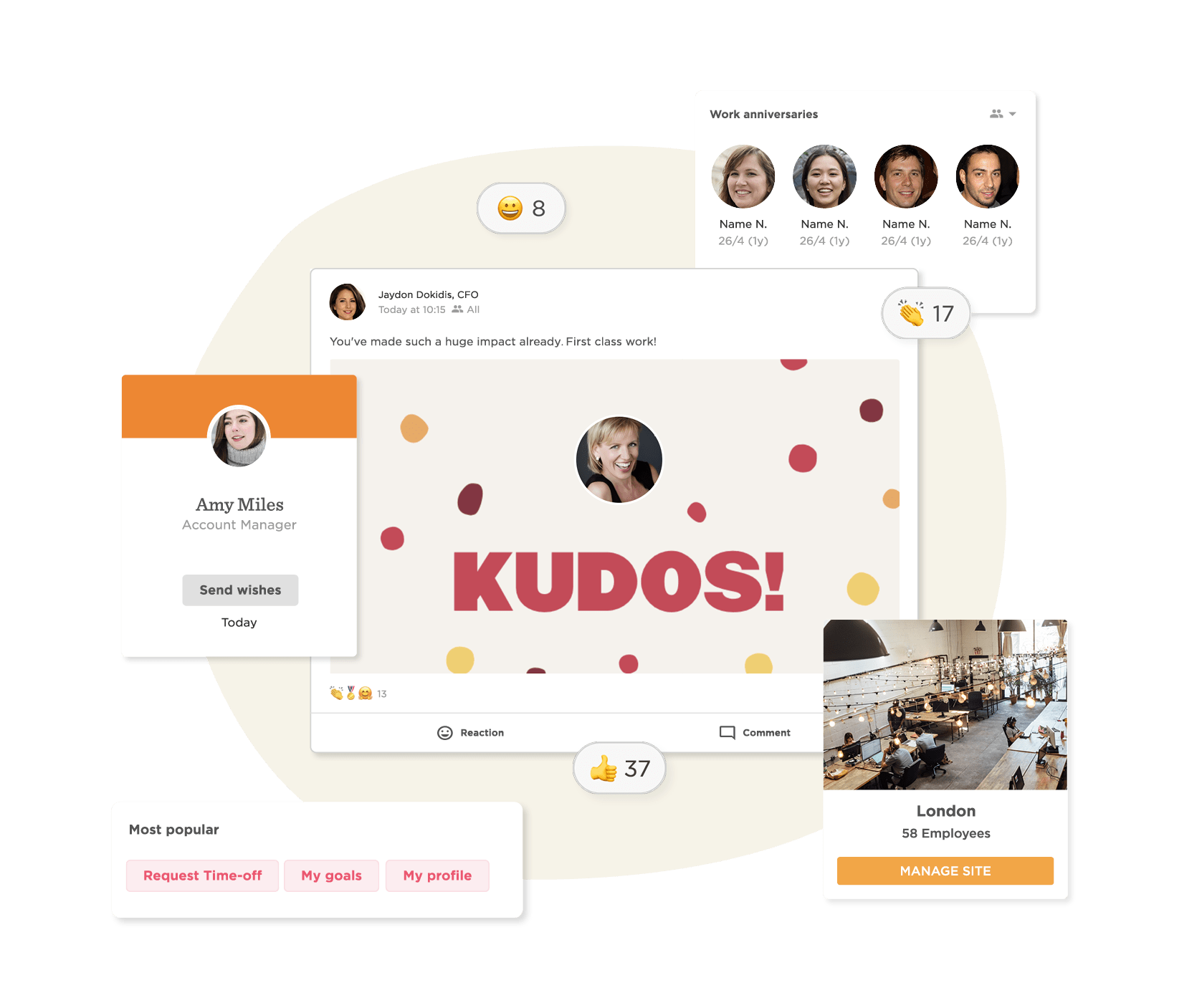Taking the next step for modern HR leaders
The world of HR is changing.
As the business world grows and evolves, the role that HR plays in the modern workplace is evolving with it. Gone are the days of a human resources team that was thought to focus solely on data administration—the modern HR professional is so much more.
“HR must think like product managers! Become as connected to the commercials and strategic direction of the business as possible.”
Jessica Zwann, Chief Operating Officer of Whereby
HR has always had a close link with employee welfare, but business practices are shifting to becoming more people-centric. And with this shift, HR leaders are becoming more and more involved as well as far more appreciated for what they bring to the table.
“If you’re leading progressive HR, you need to make sure you’re passionate about people. It’s important that you like investing in, interacting with, and nurturing people.”
Nirit Peled-Muntz, Chief People Officer of HiBob
So what is the future of HR? And how can a modern HR leader take the next step forward? In this guide, we’ll cover the key steps towards becoming an HR leader, as well as the importance of collaboration, creativity, and building a strong company culture.
The basics of HR
When you want to look towards the future, it’s important to first understand the present.
Today, the advancement of technology has transformed the way businesses operate. This transformation has meant that HR has had to adapt its methods.
We are seeing a steady shift in the role of HR. The traditional responsibilities of data admin, payroll, and enforcement of policy are now being made easier due to the rise of technology such as HR software. This has lead to HR focusing its efforts on more people-led responsibilities due to the evolving expectations of employees. And with this change, HR professionals are now steadily developing into culture and business leaders.
But before we jump to the future, let’s take a closer look at the role that HR plays today.

HR still does administrative work
With the rise of automation and HR tech, you’d be forgiven for thinking that technology has rendered physical admin work non-existent. While it’s true that tech has cut down the mountains of repetitive administrative work that would regularly pile high on HR’s desk, it hasn’t eliminated it completely.
It is perhaps easiest to think of HR tech as the trusty sidekick to HR professionals. It can be used to work through the repetitive, tedious work while leaving the more intricate work to the HR leaders.
HR professionals will still put time into the core fundamentals of HR:
- Recruiting, hiring, and onboarding
- Human resource planning
- Benefits and compensation
- Performance management
- Training and development
- Employee engagement
HR is gathering more data
Data, data, data.
Organizations are growing more and more complex by the day. In order to survive and thrive in these modern remote and hybrid workplaces, you need to embrace all of the benefits that data can provide.
Key areas of a business such as engagement and retention, performance management, and productivity can all be improved through the use of data. Being able to study these key performance metrics allows you to make informed decisions to improve your organization’s practices.
That’s why it’s key that modern HR professionals clearly understand the huge number of benefits that can come from properly utilizing data.
Recommended For Further Reading
Using data artfully
Data isn’t just numbers on a spreadsheet.
Modern HR data is a view into the minds and processes of the people in your company. It can bring together different parts of the organization and inform the way you work.
In fact, data can be used for a huge variety of purposes. Whether that’s automating and improving hiring and onboarding processes—therefore reducing the time-to-hire. Or predicting when someone is at risk of leaving their role.
Data gives you an intriguing insight into the future in a way that nothing else can, and that’s why it’s such a vital resource that should be taken advantage of. As an HR professional, you should regularly look at the data that is available to you to make sure you are getting everything you can out of this vital information.

HR leaders can function as real leaders
The modern workplace demands a lot more from its leaders.
It’s one thing to be a good business-minded leader, but you also have to be a good leader of people. This is especially true for HR professionals, as there is a huge amount of employee interaction and engagement involved in the job.
Modern HR leaders are people who can shape company policy and influence the way the business operates through employee engagement—even in hybrid workplaces, where an HR leader can utilize remote employee engagement to effect change.
They must also be able to innovate and embrace the three main pillars of design thinking:
1. Empathy: understanding the needs and problems of those you’re designing for
2. Ideation: generating a lot of ideas to solve the issues you’ve identified
3. Experimentation: testing those ideas by prototyping
With this in mind, make sure that you’re constantly thinking about ways to better yourself as a modern leader. Are you actively listening to team members? Are you leading by example? Are you fostering an atmosphere of trust and respect?

Take the next step in collaboration, culture, and creativity
Collaboration with others fuels productivity
A modern workplace needs to have a strong focus on collaboration.
There are many different ways that people can collaborate, whether it be through physically working together in a team or just having a common goal to work towards.
So let’s take a look at the key topics that surround the importance of collaboration in the modern workplace.
Internal collaboration
Working in a collaborative environment can do wonders for a team’s productivity, morale, and overall job satisfaction. This sense of internal collaboration should be fostered throughout all levels of an organization—across all departments, teams, and management levels.
The idea of collaboration across an entire organization is a key feature of the modern hybrid workspace. This is because workforces in this era are paradoxically both more dispersed as well as more connected than ever.
It is possible to be just as collaborative with a co-worker who is working out of an office on the other side of the world as it is to be with a person on the other side of your desk. Yet many businesses could find themselves in a situation where you could have two separate departments working on the same project without ever knowing what the other is doing.
As a modern HR leader, if you can foster an environment in which these two teams can work together, they will be able to work more collaboratively and efficiently—as well as a whole lot smarter.
Inclusive collaboration
It’s impossible to talk about collaboration without mentioning how invaluable a contribution diversity, equity, and inclusion brings.
It can be argued that diversity makes a big difference when it comes to driving collaboration. This is demonstrated by the fact that organizations that are rated highly for inclusion and diversity have 57 percent better collaboration within their workspaces.
In fact, studies have shown that diverse businesses are 1.8 times more likely to be innovation leaders in their market and are 35% more likely to outperform their competitors.
As a modern HR leader, having people from a diverse range of backgrounds is key to having an inclusive team. So make sure that you are casting the employment net out as wide as possible.
Culture eats vision for breakfast
Building a rich, inclusive, and winning culture at work isn’t easy. It takes far more than hiring a talented group of people to build a company that people will want to work for.
Creating a positive work culture that will help accomplish the vision set by the company essentially comes down to the intellectual and emotional ways you support your employees.
When push comes to shove, culture is far more important than simply being something you should have—it is critical to the stability, perception, and longevity of the company. Modern HR leaders should therefore keep a keen eye on the culture of their workplace – as it can make or break the business.

The benefits of curating a culture
The company culture you build as an HR leader affects nearly every area of an organization. It can improve everything from the ability to attract and retain employees to the level of revenue the organization can generate.
Let’s first take a closer look at attraction and retention.
At 47 percent, nearly half of HR professionals say that employee retention and turnover is their top challenge. In the modern workplace, employees now expect more from their employers than just a paycheck. They want an environment that encourages healthy living and personal growth.
This is shown by the fact that 46 percent of job seekers say that company culture is one of the deciding factors in the application process—while at 88 percent, almost all say that it is at least relatively important.
And the numbers are just as telling when we look at performance and revenue.
Having a highly engaged workforce can lead to a 202 percent increase in performance. And corporations that cultivate a positive and strong workplace culture can see up to a 400 percent growth in revenue.
These are just two of the many reasons why HR leaders that develop a strong company culture can transform an organization.
How to build a company culture
So we know the “why?”; now we come to the “how?”
Culture doesn’t just happen—it is created and demonstrated by leaders.
The cornerstone of a positive work environment—and which leads to peak performance—is making sure your employees feel valued and respected. And this can be achieved in a number of ways.
One sure-fire way of doing this is by prioritizing training and development.
Newly hired employees will feel lost if they aren’t properly onboarded once they start their job. Organizations with effective onboarding have 33 percent more employees feeling engaged when compared with organizations with ineffective onboarding.
A properly trained employee will know exactly what to do, be fully aware of the company’s goals, and know what is expected of them.
This is a simple, yet effective step that any modern HR professional should be taking with a view to creating a winning culture.

Creativity flows from competence
There is a strong link between creativity and competence.
And in the business world, creativity is key. It’s clear to see why 60 percent of CEOs say that creativity is the most important quality for success—because creativity breeds innovation.
And as HR professionals, being able to create an atmosphere that fosters creativity and allows employees to take risks is key to success. So let’s take a deeper look at how modern HR leaders can do this.
Creativity starts where it hurts
No one likes being irritated.
But did you know that irritation drives creativity? Similar to the proverb “Necessity is the mother of invention,” you can utilize what’s known as “useful irritation” to see opportunities you might have otherwise missed.
To dive into the science of it all, research shows that our brains are predisposed to believe that anything unknown is bad. This means that our brains can subconsciously decide that a situation is bad and discard it before we take the time to realize its value—therefore cutting ourselves off from any potential benefits.
The key to useful irritation is to sit with and embrace an uncomfortable feeling—thereby using it as a tool to foster creativity.
Therefore, allowing your team to sit with their own irritation should be encouraged. And the fact is, employees will be much happier to sit with a feeling of discomfort if they know that it can lead to improvements.
Mastery is the beginning of creativity
Can you ever put yourself in a creative state of mind if you don’t fully understand the subject matter?
It’s a difficult question to answer. Especially when you consider that children can be incredibly creative without mastery, or that anyone can create something given the right circumstances.
So it may be better to rephrase the question to, “Can you ever be consistently creative without mastery?”
Creativity isn’t a light-bulb moment of doing something incredible through luck or happenstance; it’s being able to consistently achieve something special.
Mastery and creativity go hand in hand. A full breadth of knowledge on a subject or area can give you the vision to be more creative. Without it, it’s akin to running before you can walk—if you haven’t mastered the basics, you’ll struggle to go far beyond them.
A strong HR leader will therefore encourage employees to constantly strive for improvement through Continuing Professional Development (CPD). Because the more knowledgeable their employees are, the more creative they can be.
Collaboration nurtures creativity
Creativity is a finite resource.
Think of it as a well of water. Every time you use creative energy, the well is further drained—and without first filling it back up, you’ll soon run dry.
But there is strength in numbers.
HR professionals should focus on developing strong leaders who encourage collaboration within their teams. More collaboration within the team means that each person’s well of creativity is drained less, and having other people around you to bounce ideas off means that you’re constantly being inspired by new perspectives and different ideas.
Why modern HR leaders need a modern HR platform
For years, every employee record was physically stored on paper and kept in files and cabinets. But with the arrival of modern technology such as computers, the internet, and software—there was a digital revolution of sorts.
HR tech is evolving at a rapid pace. And as we move towards automation, cloud-based HR software is key. This means that an HRIS, or human resources information system, is becoming an increasingly integral part of any modern business.

The HRIS needs to promote collaboration as the default setting
Collaboration is key to any HR process.
An HRIS can help to encourage employee collaboration—and therefore increase productivity—by making communication a simple process across all departments. Even when staff are working from a remote location.
Through the use of social media like newsfeeds, groups, and clubs, an HRIS can make it far easier for employees to collaborate—even when there are geographical or scheduling barriers that make face-to-face communication difficult.
The HRIS needs to be able to measure culture and change it
A company’s culture is the foundation of its employees’ experience.
Therefore, a modern HRIS needs to be able to measure this culture and facilitate changing it if necessary.
By tracking and measuring key metrics such as performance, the onboarding process, and compliance, an HRIS can play a huge role in establishing, adapting, and nurturing the culture of a business.
And often, these variables are linked. So any improvement in one metric is bound to drive an improvement in the others. Resulting in a stronger company culture that benefits employees as well as the C-suite.
Meet Bob
At HiBob, we’ve built a modern HR platform designed for modern business needs—today and beyond.
We focused on building something robust yet intuitive and easy to use, which has led Bob to be the platform of choice for thousands of fast-growing modern, mid-sized organizations.
For HR, it delivers automation for many common processes, allows greater oversight and visibility of the business, and centralizes all people data in a secure, user-friendly environment.
For managers, it provides access to data and insights to help them lead more effectively and streamline processes.
For people, it’s the tools and information they need to connect, develop, and grow throughout their journey.
In a short time, Bob can be deployed to enable communication, collaboration, and connectivity that drives stronger engagement, productivity, and business outcomes.
